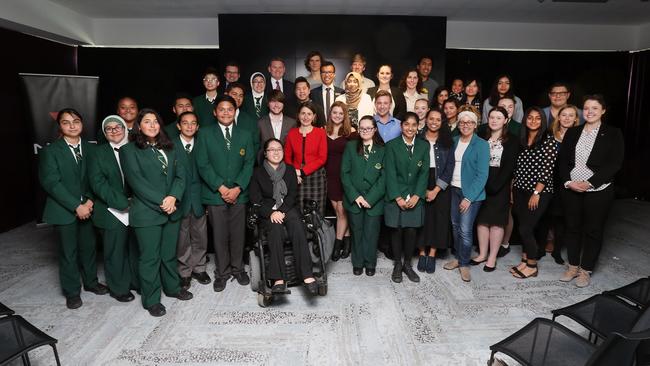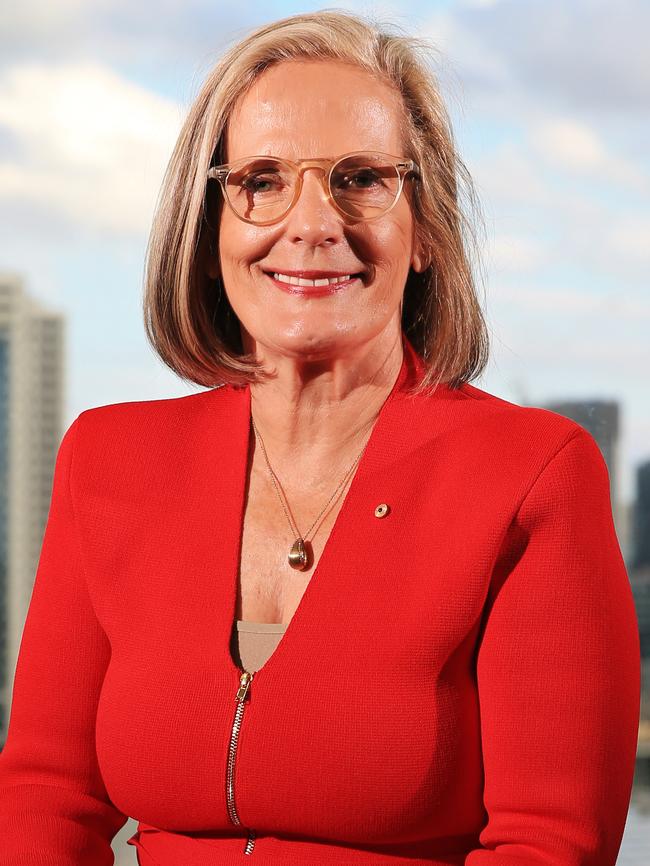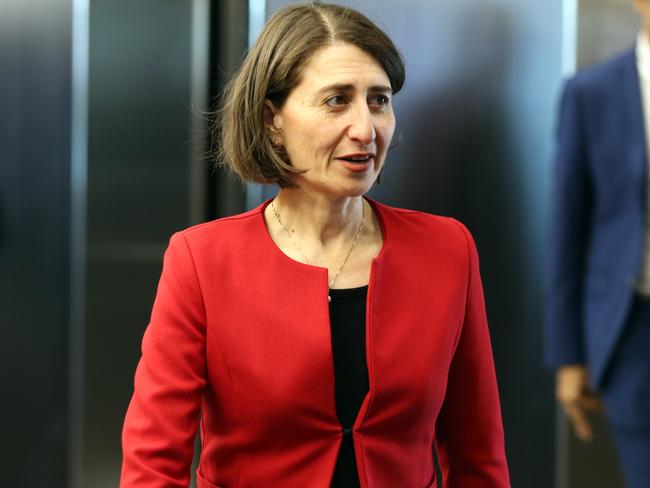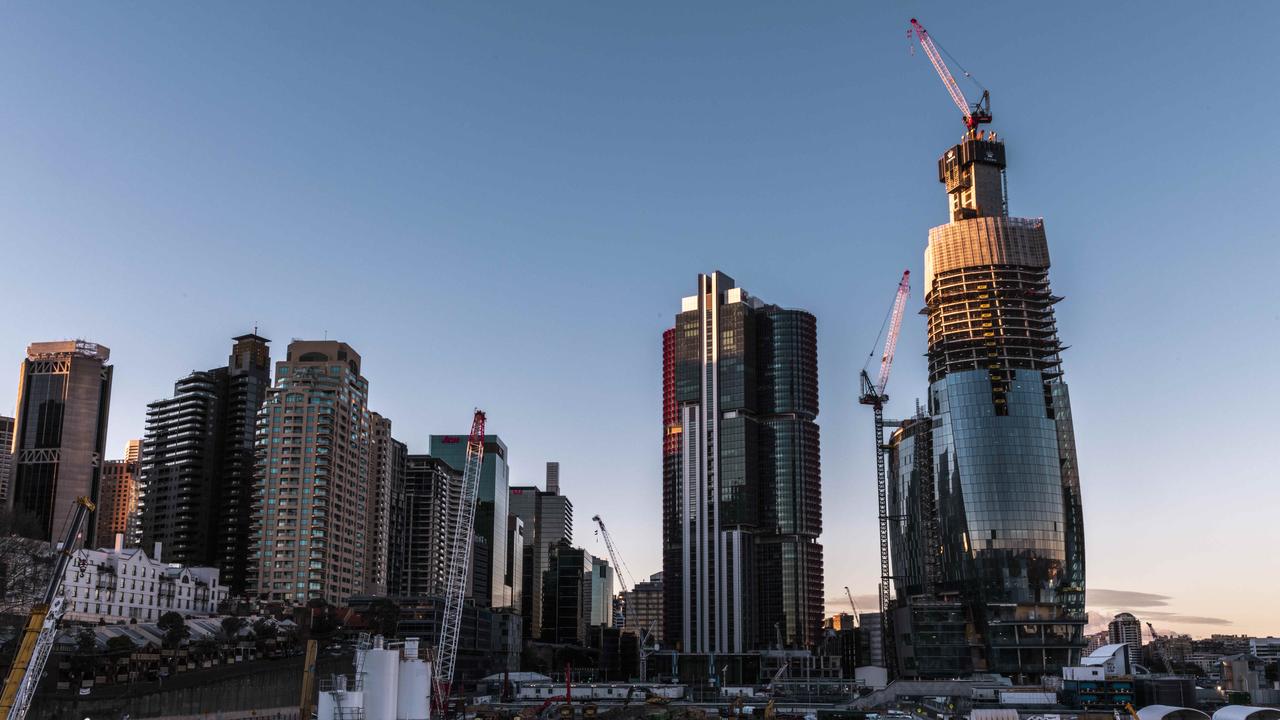Lucy Turnbull: Project Sydney — The future of this city is really great
PROJECT SYDNEY: THIS city has a capital outlook as long as the correct decisions are made in terms of planning and services, says Lucy Turnbull.
Project Sydney
Don't miss out on the headlines from Project Sydney. Followed categories will be added to My News.
Forget the naysayers, Sydney is growing and that’s a good thing.
There is nothing more dangerous than ignoring population growth or wishing it away by saying we are already full — or by generally burying our heads in the sand. Children are being born, people are living longer and we have for over two centuries been a major Australian destination for visitors and migrants.
Our job is to manage growth well and make sure it is well planned so we, and our children and grandchildren, get the housing, the jobs, the transport and the services we all need. So that we, and those who follow us, live in a greater and more liveable city.
Growing cities are successful cities and, by attracting business and investment, successful cities deliver more opportunities for everyone.

Sydney’s growth, historically, has been underestimated. It’s outpaced good planning and timely infrastructure delivery. The metropolitan area has sprawled and while we need to make Greater Sydney future-ready with new infrastructure, we also have to address current shortfalls.
The good news is that Sydney is in the middle of a transport infrastructure boom the like of which none of us has ever seen.
The Greater Sydney Commission was established to deliver big picture planning for Greater Sydney and address the disconnect between our city’s growth, land use planning and infrastructure delivery.
Our population will grow by more than 1.7 million by 2036. While that sounds daunting, growth of that level is not new for Sydney. Our population has grown by more than 35 per cent since 1991 — that’s an additional 1.2 million people in just over 25 years.
To meet the future needs of people living in Greater Sydney, we are thinking about this growth as more than just numbers. It’s people who make up cities. We are considering who these people are and what types of housing, infrastructure, jobs and services they will want and need.
The work we have been undertaking, in developing six Draft District Plans and the Draft Greater Sydney Region Plan, has involved extensive engagement with the community, industry, business and other key stakeholder groups.

Central to our thinking is people — cities are fundamentally human places and a city that works best is one that’s designed to meet the aspirations of the people who live there.
In talking with the community, we have heard some great stories about how Sydneysiders see the opportunities in rethinking Greater Sydney, in particular the chord that has been struck by our Three Cities vision for Sydney — the established eastern Harbour City, the developing central River city and the emerging western Parkland city.
At a recent community engagement session, a young woman from Sydney’s west spoke about the energisation and growth of the region, with more lifestyle and cultural opportunities, which would mean not having to head into Enmore every time she wanted to see a band play.
Similarly, a young man from Liverpool talked about the benefits he could see in a city where he could cycle to cafes and parks, rather than drive, which might be “how it is’ in the inner suburbs but has been unattainable in what traditionally have been “outer suburbs”. We need to create inner city connectedness and convenience in many other parts of Sydney.

In reviewing the submissions and feedback on the draft District and Metropolitan plans, it’s also become apparent Sydneysiders have a clear sense of their priorities for the city.
Perhaps not surprisingly, better co-ordination between land use planning and the delivery of transport and infrastructure was among the strongest themes in the feedback and submissions. And that is our key mission: Helping to put the pieces of the puzzle together.
Housing density and affordability, the provision of open space and support for connecting and enhancing the Greater Sydney’s green spaces were other key issues.
We have heard that the community is keen to understand how the increased delivery of housing supply will be managed; that there is support for enhancing Greater Sydney’s green spaces and urban trees and a desire for improved recreation facilities and walking and cycling networks.
But in addition to the things we need to build to support growth, we also need to look at how the makeup of our population is changing. In the 20 years leading up to 2011, most of Sydney’s population growth was working. However, over the next 20 years we’re going to see the biggest increase in the dependent age groups like retirees, the elderly and children.
There are around 90,000 babies born in NSW each year and by 2036 the number of people aged 65 and over will double, with the number of over-90s tripling.
As the population ages, more empty-nesters and older people will be living alone. Even without an increase in population, this would mean that Sydney would need around 140,000 extra houses over the next 20 years.
Retirees and older people may prefer to be closer to shops, health services and transport. Families with babies and young children will need childcare centres, schools and great places for their kids to play.
On affordable rental housing, which is accommodation for very low to low income earners on household incomes of $80,000 or less, we received differing views on whether our target of five to 10 per cent would impede housing supply or does not go far enough. This is something we are giving significant ongoing attention
Other key themes that have come to the fore in the submissions include the expectation that the look of our urban centres is important and people expect new buildings to be examples of thoughtful, high quality urban design.
Sydneysiders also are passionate about trees: especially to help shade and cool our city, while being close to services, public transport and a diverse range of job opportunities is vital for future growth and to improve access for Sydneysiders.
I hear people talk about “futureproofing” Sydney, but we don’t want to prevent the future.
We want to be prepared for the future and I am proud that the Greater Sydney Commission is at the forefront of this work.
Our plan is for a Greater Sydney that will meet everyone’s needs with a mix of places that people want to live, work and visit — places that have the essentials of housing choices, jobs, open spaces and facilities, a Greater Sydney that is productive, liveable and sustainable, but most importantly, one that has been planned with people at its centre.
Lucy Turnbull AO is Chair of the Greater Sydney Commission


